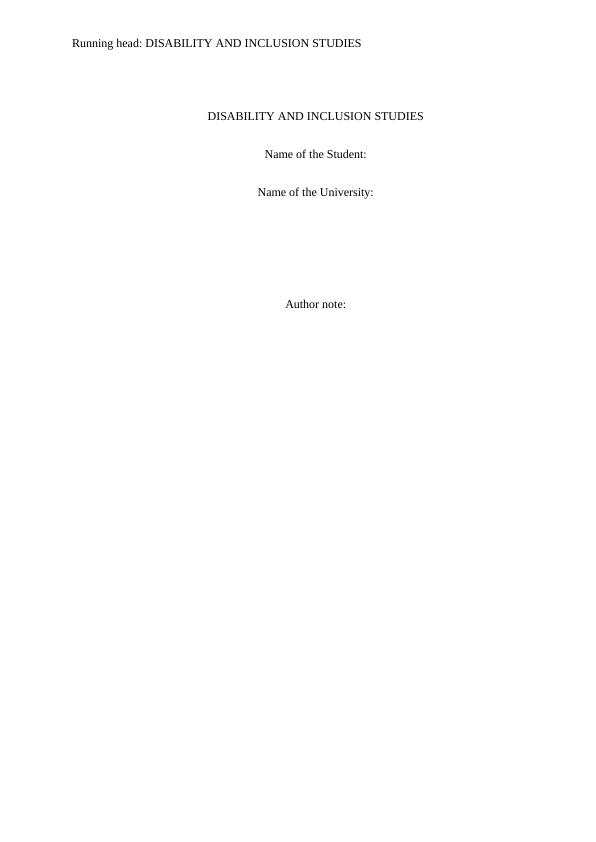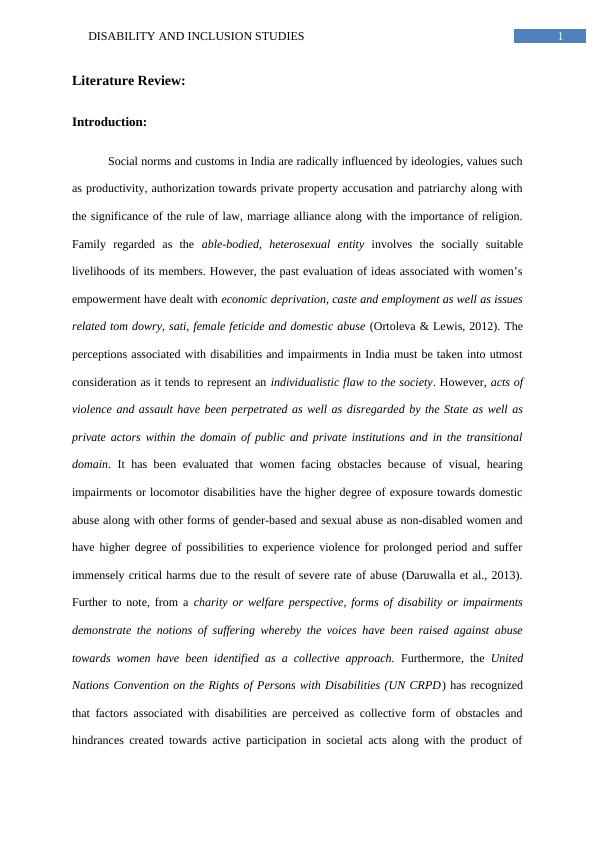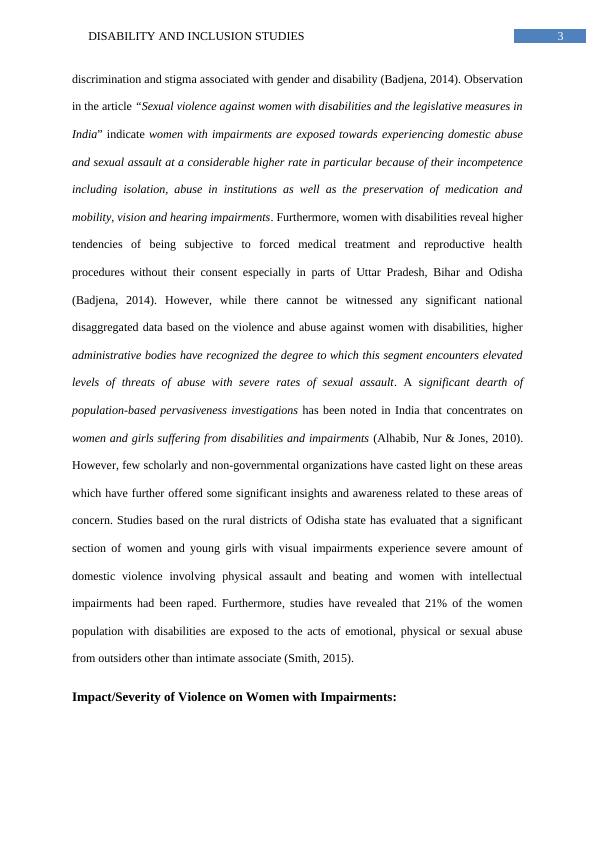Violence Against Women with Disabilities in India: A Literature Review
Quantifying the prevalence of disability in India and examining the socioeconomic and regional divides in disability prevalence.
18 Pages5074 Words433 Views
Added on 2023-06-11
About This Document
This literature review explores the prevalence and impact of violence against women with disabilities in India, as well as the legal frameworks in place to protect them. It highlights the disproportionate rates of abuse and discrimination faced by this population and the need for gender-sensitive laws and amendments to existing legal frameworks.
Violence Against Women with Disabilities in India: A Literature Review
Quantifying the prevalence of disability in India and examining the socioeconomic and regional divides in disability prevalence.
Added on 2023-06-11
ShareRelated Documents
End of preview
Want to access all the pages? Upload your documents or become a member.
Family violence is considered a gendered crime
|5
|1108
|26
Gender, Community and Social Change
|6
|1458
|337
Domestic Violence in Australia: A Briefing Note
|9
|1389
|308
Hospitality Management: Sample Assignment
|7
|1455
|29
Gender Inequality and Violence against Women and LGBT Communities
|6
|1494
|87
Health Inequalities in Coventry: A case study of domestic violence and abuse on women in Coventry
|18
|2707
|361




